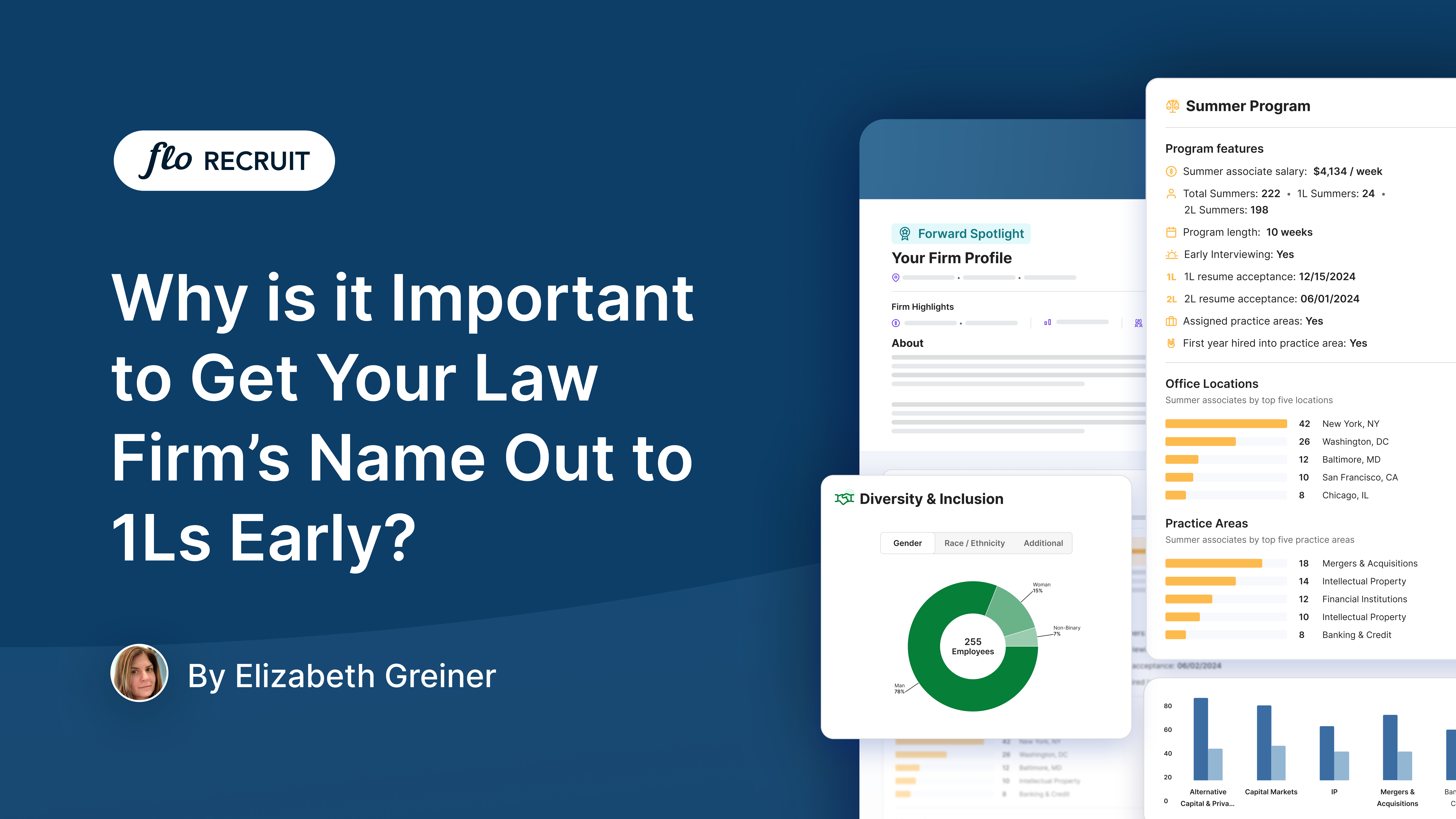Closing Fast: The One Advantage Every Firm Can Control in Lateral Recruiting
In today’s legal hiring landscape, lateral recruiting doesn’t follow a single formula. It’s shaped by practice group needs, office-level decision-making, partner involvement, and candidate expectations—all of which vary from firm to firm and even search to search. But regardless of how unpredictable the market might feel or how competitive the landscape becomes; there’s one consistent advantage every law firm can control: speed.
Top Candidates Always Have Options
Whether the economy is booming, slowing, or somewhere in between, top-tier lateral candidates are in demand. Firms looking to add attorneys with strong experience—especially in high-growth or niche practice areas—aren’t the only ones watching. These candidates are often weighing multiple opportunities at once, and, that means, time is not on your side.
The best candidates know their worth, and they can often afford to be selective. For that reason, the way your firm conducts the recruiting process isn’t just a procedural detail—it’s part of your pitch. A streamlined, communicative, and efficient recruiting process signals to a candidate that your firm is decisive, collaborative, and eager to invest in their success. A disorganized process, on the other hand, sends the opposite message.
Differentiating Through Process
To many laterals, BigLaw firms can start to look and sound the same—similar clients, comparable compensation, parallel opportunities for advancement. While cultural and practice-specific distinctions matter, many of them are hard to convey in a short hiring timeline. What isn’t hard to convey? Your level of interest and how smoothly you move through the hiring process.
Firms that stand out often do so not just because of what they offer, but how they recruit. From first contact to final offer, the candidate experience can tip the scales.
The Realities of Lateral Hiring
Unlike law student recruiting, which tends to follow a more regimented calendar and set of expectations, lateral hiring varies significantly. Many firms manage these searches on a practice group level, with group heads and office leaders taking the lead. That’s natural, given the need to align hiring closely with business development and client work.
However, this decentralized approach can come with growing pains. Without a clear internal process, hiring decisions can get bottlenecked by scheduling delays, unclear approval chains, or communication breakdowns. The result? Missed opportunities and candidates who go elsewhere.
In-demand laterals move quickly through processes at competing firms. If your firm doesn’t have a plan to keep pace, you risk losing out.
The Importance of Clarity and Communication
It’s crucial to establish early on who needs to be involved in the hiring decision, what steps are necessary, and what the ideal timeline looks like. Proactive internal coordination is essential, but so is transparency with candidates (or their recruiters) about what your process looks like.
From the outset, aim to have an open dialogue. Ask the candidate what timeline they’re working on, and what considerations matter most in their decision-making. If a candidate tells you they expect offers in the next two weeks, you need to know that and plan accordingly. Waiting until the end of the process to learn they’ve accepted another offer is too late.
Technology as a Competitive Advantage
In a fast-paced lateral market, tools like a customizable applicant tracking system (ATS) can make all the difference. Using a tool like Flo Recruit Applicant Tracking gives your firm visibility into every step of the process: who has interviewed the candidate, what feedback has been given, and where things stand with internal approvals.
When all stakeholders—from recruiting to practice leaders—have access to real-time updates, your team can move faster and with greater confidence. You avoid miscommunication, redundant interviews, and delays caused by manual coordination. Even better, you send a strong message to the candidate: we are ready for you.

Speed Signals Seriousness
One of the most overlooked signals in lateral hiring is timing. A quick and smooth process tells the candidate you’re serious. It shows that your firm is aligned, organized, and genuinely enthusiastic about bringing them on board. It also shows that you value their time and interest.
Conversely, when firms take too long to get back to candidates—whether it’s scheduling a second round of interviews, collecting feedback, or issuing an offer—they risk losing top talent. Delays can look like disinterest. Internal hurdles and red tape can appear as broader cultural issues. And by the time you’re ready to extend an offer, the candidate may already have moved on.
Stand Out Where You Can
In a world where law firms often compete on similar platforms, your recruiting process can become a key differentiator. You may not be able to outbid a competitor firm or offer a more prestigious client list, but you can outpace them.
A candidate who feels valued, respected, and prioritized throughout the hiring process is more likely to remember your firm positively, and more likely to say yes. In lateral recruiting, where speed and clarity are often the deciding factors, taking control of your process is the single biggest competitive edge you can create. Learn more about how Flo Recruit’s ATS can help you hire better, faster: Request a demo.



